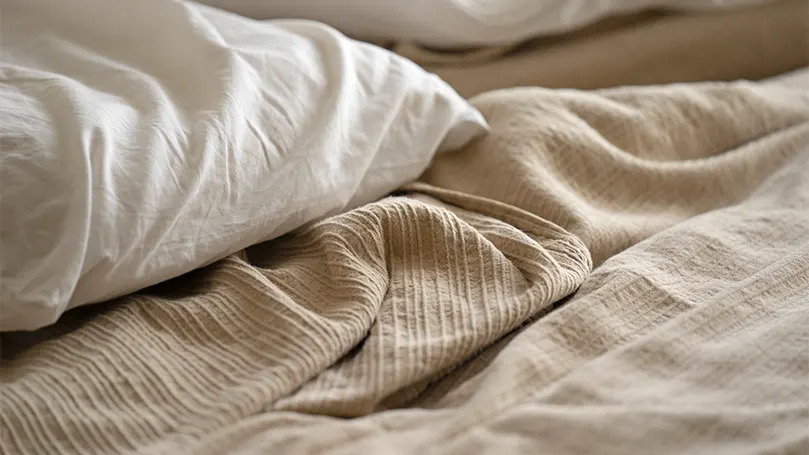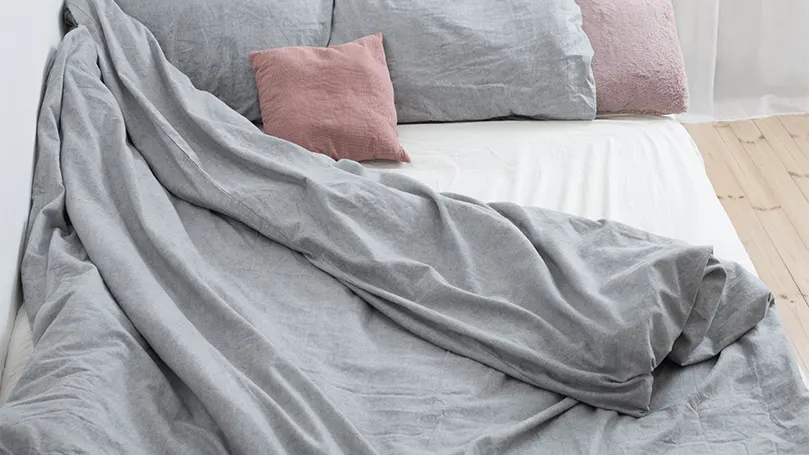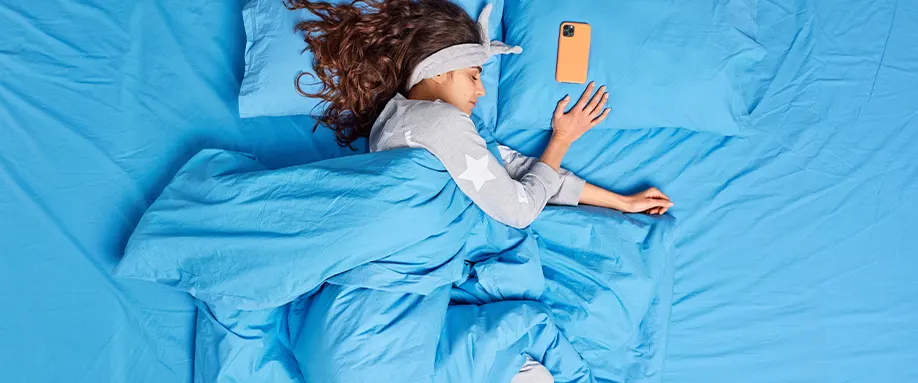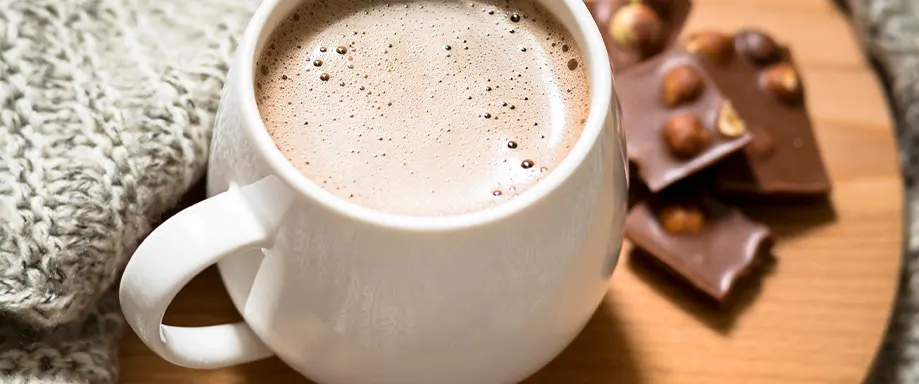What is a thread count?

Given that we've just explained what a thread count is – the number of threads in an inch of fabric – you might think that this is all there is to know.
But like with most products, it's not always that straightforward.
And that's because there are other factors at play here. For one, it's very easy to boost thread counts and make your fabric seem higher quality than it really is. Plus, as we'll discuss later on, a higher thread count for sheets isn't the only thing that matters.
Does a high thread count equal better-quality sheets?

Yes and no. If we lived in a perfect world where brands were completely transparent with their customers, a higher thread count would probably be a very good selling point. However, that's not really the case. As we've alluded to in the previous segment, there are ways that you can inflate your sheet thread count without technically lying.
On top of that, nothing stops brands from creating low-quality bedding but ensuring they have a higher thread count. After all, these two things aren't mutually inclusive. And between a high-quality sheet with a low thread count and a low-quality sheet with a high thread count, you'd likely be better off with the former. So, let's talk about all the ways brands can trick you into getting subpar products.
Multi-ply vs single ply
The easiest way to do creative math and boost your thread count is by using multi-ply yarns for your sheets. Just like with toilet paper, multi-ply yarns use multiple smaller threads that weave around each other in other to make a strand.
However, in practical terms, this isn't something you'd want. After all, when comparing a single-ply thread and a multi-ply thread, the multi-ply simply looks a lot more ragged. Not only that but it also doesn't have the same structural integrity as single-ply yarn.
Nevertheless, brands can count all the little threads that make up a multi-ply yarn and claim to have high thread count sheets. However, if you were looking for the best sheets in the business, these multi-ply models will likely leave you disappointed. After all, high thread counts made with multi-ply (let's say 800) usually have the performance of much more standard thread counts (like 200-300).
What else should you look for in high-quality sheets?

Now that you hopefully know that bed sheets aren't exclusively ranked by their thread counts, let's talk about the bigger picture. Don't get us wrong, keeping note of it can still be important. However, there's more to consider when looking for good-quality sheets.
And as we go through the following section, we encourage you to think of your favourite sheet set and try to recognise which of the following features makes it so great. Then drop us a comment below and we'll see what people care about the most!
The material
When talking about thread count, we mostly refer to cotton sheets and pillowcases. However, that's not always the case. While it's not too common, bedding products made from synthetic materials can also have an advertised thread count. However, very few or any of the high thread count bedding made from synthetic materials can compete with high-quality cotton.
On top of that, manufacturers can also use blends. For example, if the fabric is made from 50% cotton and 50% polyester or some other alternative. Once again, getting pure cotton is probably going to get you a better end result than just focusing on the thread count number.
All of that being said, cotton isn't even the only high-quality fabric on the market! In fact, if you value breathability and sustainability above all else, bamboo or eucalyptus bedding might even be better options for you.
The cotton type
Okay, let's say that you've decided that cotton was the ideal fabric for you. Well, you're still not done. That's because there's a big difference between lower-quality cotton and something like Egyptian cotton!
This is because Egyptian cotton is a long staple cotton. We know, it's another unusual term, but it's important. This is because a long-staple cotton has fewer strands sticking out of the weave and is generally a lot more durable. On top of that, long-staple cotton actually gets softer the more you use it – leading to really good longevity as well.
The weave
Although the weave of the cotton is arguably not as influential as the previous two factors, it's still a good indicator. This is because, in a way, the weave showcases how that high or low thread count was actually utilised.
The two most common weaves you're likely to see with higher-end cotton sheets are Percale and Sateen. And while both are extremely popular and usually dictate a certain level of quality, some people will prefer one over the other. For example, a Sateen weave usually leads to a thicker fabric that drapes better. And a Percale weave on the other hand is better for light and fluffy items.
The brand
Although not everyone will care about the brand they're buying from, we believe it's worth taking it into account. This is because bigger brands simply offer features that smaller or unknown brands rarely do. For example, if you're an environmentally conscious person, bigger brands often have certifications that prove the cotton was ethically sourced.
Plus, if you're getting luxury sheets, it's good to have some sort of warranty in case something goes wrong. Lastly, bigger brands have an image to uphold, so, they're less likely to do creative math when it comes to thread count. That being said, this definitely doesn't account for every bigger brand out there.
Reviews
Although everyone is different, seeing how others respond to an item can still give you a good idea of its quality. And, if you listened to our previous tip, there are likely more than enough reviews of the sheets you choose. We might even have one!
So, make sure to look up the brand or the specific bedding item you have in mind and see what the people think. And if you're worried about a certain aspect, like breathability, search forums for that exact keyword.
Your preferences
Lastly, there is no objective quality. Sure, we can all agree that a pillow is more comfortable than a rock. But when comparing sheets or pillowcases, it's not at all straightforward. If you're a hot sleeper or have really sensitive skin, even a 200-thread count sheet can feel sublime while a 600-thread count one feels awful.
So, if possible, get the items in person and feel the fabric. Or talk to your friends/family and see their experiences with different bedding products. And most importantly, don't think that you'll enjoy a bedding product just because it has a ridiculously high thread count.
What is the best thread count?

To wrap everything up, let's talk about the “ideal” one. As we've mentioned in our previous segment, it doesn't exist. If the material is high-quality and the brand is good, any thread count can keep you comfortable.
However, we would like to give you one piece of advice. If the bedding product is boosting a “1000-thread count” label everywhere, be careful. There's always a chance that those numbers have been boosted. So, if any of your loved ones ever ask you “what does thread count mean?” make sure to send them this article and help them potentially save some money.
Spread the word
Related products:
Recommended reading:














There are no comments yet
"*" indicates required fields